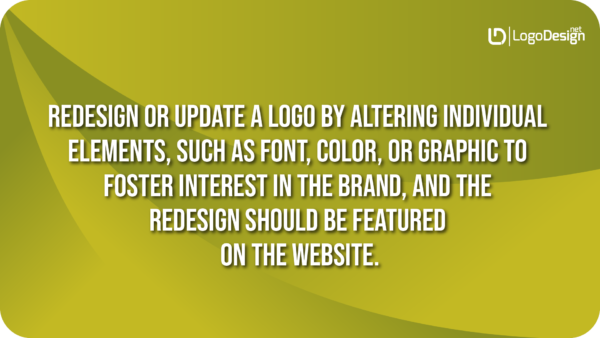Everyone knows that logos are a fundamental part of establishing and building a business. They’re usually the first thing people notice about a company, and if they’re done well, they should stick in the mind.
What about incorporating the logo in website design?
Logos are more than just the brand ambassador. Whether you’re building a website for yourself as a creative professional, or you’re mocking up a website to present to a client for approval, featuring the logo can do a lot for setting a solid, recognizable foundation to the site.
Here are ten ways that show how a logo design attracts viewers, builds and sustains your brand online.

1. Makes a good first impression
When a prospective client first hears or reads about a business, they may not form a very strong memory of it. The retention rate of written or spoken information is low, somewhere around 10-20%. Visual information, on the other hand, is retained at a rate of closer to 65%.
So the logo for any given brand is a vital part of establishing a connection between that company and a potential client.
2. Promotes a professional image
Along the same lines, a professional, applicable logo promotes a feeling of trustworthiness and reliability. Visit most websites, and you’ll find the logo at the top left corner. Consumers have come to expect it, and the presence of the logo just where they expect to find it gives the site a higher level of credibility. It also increases memorability.
Info source: Nielson Norman Group
- Promotes personality
A professional logo doesn’t mean a staid or boring logo, of course. Logos are brand ambassadors; they should reflect what the brand is all about. Though placement is important. A logo that truly tells the viewer something vital about the tone of the brand is even more essential.
- Speaks to the audience
Logos are all about communication. They’re shorthand, basically, for the mission statement of the company. Consistent use of a logo on a website can reinforce that message, meaning that it doesn’t necessarily need to be reiterated in the actual copy, thus freeing up some space within the site itself.
- Builds the brand
Here’s the thing you must know: a logo design is essential for building a brand identity. However, branding is about the company as a whole, not just what’s presented visually. That doesn’t negate the visual aspects though.
Using a logo throughout a website, across social media platforms, and on products and in marketing all promotes consistency, which helps with the next point.
6. Promotes unified marketing
Consistency is key to marketing. While unique and off-beat marketing certainly is valuable for capturing attention, if it’s so off-base that it doesn’t even involve the established logo, colors, or tone of the company, it won’t do anything to build the brand. Consumers need to be able to recognize where the marketing is coming from; the logo serves as an identifying mark.
- Creates a memorable visual
In the first aspect of a good logo, we mentioned that visuals are significantly more memorable than written or spoken information. But even though it only takes ten seconds for a viewer to form a first impression of a visual, it takes five to seven impressions for the viewer to recognize it.
Carefully crafted logos which include aspects of color psychology can also serve as a CTA. Red, for instance, is a stirring, motivating color, and when used in a logo can impel the viewer to take action.
- Encourages loyalty
Establishing good customer service, an appealing brand personality, and worthwhile products all contribute to the overall experience; that’s all part of branding, and it is incredibly valuable in building a loyal customer base.
Again, the logo is the face of that; with a good brand behind a good logo, consumers are more likely to flock to the website to seek out interaction with the company.
- Projects Brand Versatility
Responsive design is a must for web developers today. Consumers have come to expect that brand experience will follow a pattern, regardless of the platform the consumer is using to interact with the brand. So if a client is using a laptop and then switches to a smartphone, they expect to be able to recognize clearly that they’re still working with that company. This calls for flow, stability, and commonalities, and the logo can play a big part in that.
- Refreshes Audience Interest
Working with an established website and looking for a way to update it to be more modern and appealing? Crafting a company and hoping to send a message of “cutting edge” and “on-trend” to your potential customers?
Logo redesign and update is a time-honored way of promoting interest and relatability. Keeping some elements of the original logo aids recognition, but no company should ever feel stuck or trapped into using the same old tired logo. Take the Starbucks logo as an example — in terms of logos, evolution is definitely a good thing.
Given the fact that logo designs have the propensity to improve or destroy your brand identity online, it’s worth a thought to pay attention to its role, form, and placement on your website or when designing a brand new website.
Read more:





